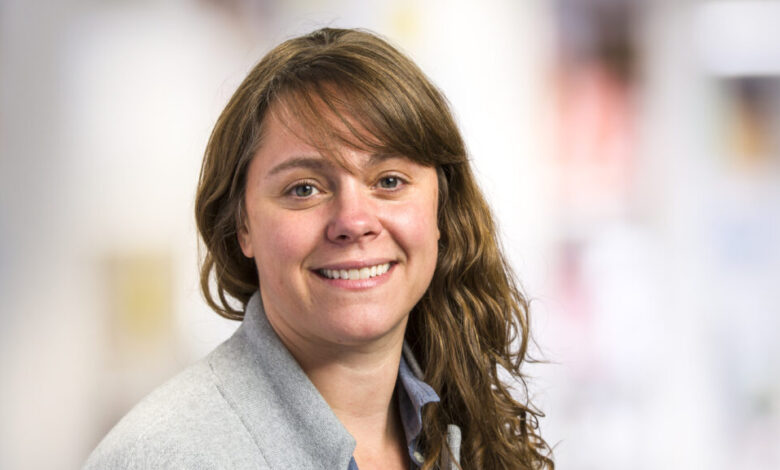Jennifer Adair on making gene therapy available globally

BALTIMORE — Gene and cell therapies have transformed a handful of devastating disorders in the U.S. and Europe, with more treatments on the way. But those technologies have largely failed to reach most of the world.
These lags are ubiquitous in the current drug development system, where new therapies are approved in wealthy countries and then slowly leak out to low- and middle-income countries, many years later. In the case of gene therapy, that means countries most affected by a disease such as sickle cell may wait decades to access a curative therapy.
For the last few years, a handful of researchers in the U.S. and around the world have tried to find ways of ensuring global access to these technologies. In 2020, they formed the Global Gene Therapy Initiative, with an initial goal of setting up a gene therapy clinical trial for a hemoglobinopathy — such as a disease like sickle cell or beta thalassemia — or HIV in two different low- and middle-income countries by 2024.
That hasn’t quite happened, but a trial is underway in India for hemophilia A and Uganda is set to begin its own study later this year. India and Brazil have also invested in developing their own CAR-T treatments for cancer.
On Wednesday, a group of initiative researchers published a paper and an editorial in Science Translational Medicine documenting challenges to access in six countries and calling for more engagement with scientists around the world to ensure access. It’s the first in a series of publications on global access. STAT sat down at the American Society of Gene and Cell Therapy conference with co-author Jennifer Adair, who develops scalable, low-cost gene therapies at the Fred Hutchinson Cancer Center and helped found the Global Gene Therapy Initiative.
This conversation has been edited and condensed for clarity
Historically, how has global access to gene therapy been talked about? Has it been talked about?
At least for me, who’s been in the field for about 15 years, people talk about it, but it often feels like that’s lip service.
Personally, it was a hard realization between 2012-2014. I got asked to work on a gene therapy trial for people with HIV. I initially was thinking about the hard scientific question. And so I went to a meeting and the very first speaker put up a map of the global caseload and the global distribution [of HIV]. And my mind was like, “Oh crap. I’m doing a bad thing.”
These are incredibly complicated and super expensive, and this is a trial that has incredible meaning for not hundreds or thousands of patients, but tens of millions, and they don’t live here.
It feels particularly acute in gene therapy because these are such complex, expensive medicines. But historically, the way most medicines have been built is in the U.S. first and then to varying degrees in the rest of the world, years or decades later. Is there a way for gene therapy to do things differently?
Yes, is the short answer. I can refer you to this great 2011 paper. “17 years is the answer. What is the question?” The translational gap between high- and middle-income countries.
We ought to be able to do better. Gene therapy not only can do better and should do better — our entire field is based on the genetics of humans and leveraging that for human health. And we now know that we are not the most ancestral population. That is Africans. And if you want to make a drug that works, that is based on genetics, it ought to be considering the most ancestral population. So we have an obligation to do better and do it better very quickly.
The Global Gene Therapy Initiative has been running for a couple years. What have been the key initiatives to ensure global access?
Really, it starts with no one here can decide what should go someplace else or how it should happen. We created a platform whereby interested parties and countries could self-nominate. There are a lot of barriers just to participate. There are certain countries in Africa right now that have five-year waiting lists for a tourist visa to come to the U.S., which means they’re not going to be able to attend this conference for five years.
India was on the precipice. It had a regulatory infrastructure in place, but was really interested in hearing more about what was happening in the rest of the world. Uganda was very much in its infancy and it was like, how long is it going to take for us to have this? So creating a virtual platform where people could just talk to each other.
I don’t know that anybody exactly knows how to make this work, because there are so many different geopolitical structures and scientific and translational gaps that it’s impossible for there to be one strategy that’s going to work worldwide.
You’re talking now about enabling countries to build their own gene therapies. But should that be the model? Why not just say: We’ve built these therapies here, let’s find a way to ensure that BioMarin and UniQure sell those therapies everywhere?
I wish it were that simple. The field relatively is still in its infancy. These companies aren’t forecasting revenue streams that are very long-lived and providing massive stability.
Most countries in sub-Saharan Africa have self-pay health care. So what is that going to cost? And if you say it’s cost-plus — like the cost of manufacturing plus a little bit — well, what is that?
And for these therapies, cost of manufacturing is a lot, right? Often hundreds of thousands of dollars?
Yep. And we [in the U.S.] have a value-based model. There’s a lot of resistance to saying what it actually costs. Because then, if you are charging here for the same product as someone in sub-Saharan Africa, under a cost-plus model, then people here are like, well, why do I have to pay so much?
So figuring out the economics of this requires a fresh infusion of ideas.
Make this more precise for me: What is the connection between gene therapy costs in the U.S. and how we get them to the rest of the world?
It’s not just cost. It’s also regulation, right? And a lot of regulatory spaces are in their infancy. There’s a lot of countries that are starting to develop biotechnology policies that were originated on agricultural genetic engineering, not for human health.
We talk about the African Union and the newly established African Medicines Agency that we hope will model after something like the European Medicines Agency. But EMA covers 27 countries. AMA has to cover 54.
But you jumped over my question about cost. It sounded like you were saying the barrier is not just cost of producing the therapies but until these therapies are more profitable, it will be hard for them to market?
I’m acknowledging that it’s taken a tremendous amount of effort to get these authorizations. That can’t be understated. The idea here is not to say companies are bad. We need commercialization.
But we’re looking at alternative economic models. A very simple one: What if Vertex set up manufacturing on the ground in Africa, but at U.S. and EMA standards, for export? And so they were charging what the price tag is here, the list price is here, but manufacturing in a space where they make even more money if the cost of labor and/or establishment of a manufacturing facility is lower.
You want Vertex to make a facility in Africa?
Hypothetically. You do have to work out some import stuff, right? But if you manufacture locally for export to the U.S. and EMA at a $2.2 million dollar price tag, could you apply your cost savings to subsidize therapy locally?
Can you say any other creative ideas you’re thinking about?
Over the last 20 years there’s been a clear shift of R&D to academic centers. But it means we’re funding research and development from taxpayer money and then it’s getting licensed, and these therapies aren’t really available back to the taxpayers.
We have to figure out how to shift the conversation around making sure that access is provided. Can academics leverage power towards access in these negotiations?
For example, getting enough funding so academics can have human data before licensing, to make it the most attractive packet possible. And then you say [to companies] you have to negotiate for an access provision at commercialization in exchange for a lower licensing fee. And if you’re not willing to accept those terms, then you have to pay back more because we need to have a fund so that we can provide access when this multi-million dollar therapy is approved.
I hear some in the gene therapy world argue that certain therapies, particularly ex vivo ones that require engineering cells outside the body, are still too complex to reach most of the world. Perhaps you can get to places that have a bone marrow transplant center, but right now, the infrastructure requirements are too difficult and these companies are not necessarily generating a ton of revenue in the U.S., so we may need to wait for a new technology.
For one, companies don’t always have to spend money. Tax incentives can save companies money.
I’m also someone who wants to challenge this notion that you have to have a bone marrow transplant center. For a lot of these ex vivo therapies, if you can provide transfusion support, if you can administer chemotherapy, if you can provide immuno-support, then you’re capable. I think we need to stop holding that card over foreign centers’ heads.
And we have to stop thinking that we know the best thing for the world. We need to let the world be part of that conversation and tell us what they want. There’s going to be a lot of hurdles going in vivo. And it is unfair to leave people completely excluded simply because you think that far-reaching goal is where we have to be before they can be part of the conversation.
What’s the top thing you’d like to see done to ensure global access to gene therapies?
We need to think about genetic diversity. There’s so much we have yet to learn. There are so many diseases that historically people thought don’t exist in certain parts of the world. It turns out they do, they just don’t share the same mutations as Caucasian people.
And I would love to see patients engaged as co-creators in these medicines in much more meaningful ways.
Will that ensure global access?
Yes. Especially when you include patients who represent the global majority patient case, because then you will really know what the barriers are. I firmly, being the eternal optimist, believe that when we try to answer the hardest questions, we’re going to find solutions that actually benefit everybody.
It’s a central premise of the Global Gene Therapy Initiative. If you can figure out how to get it to a sickle cell patient in sub-Saharan Africa who lives in a rural village, the technology we’re going to have to come up with to do that is going to make it more affordable, more accessible to patients here.



